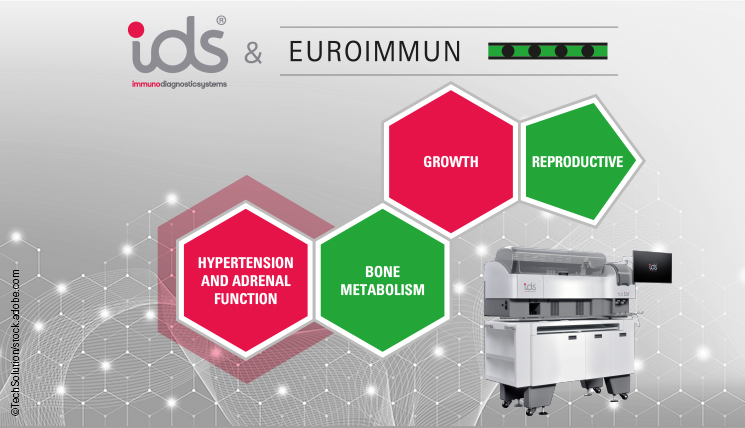Approximately every fifth person in Europe and almost all adults in large parts of Asia are not able to digest lactose. This is referred to as lactose intolerance. Actually, lactose intolerance is not a disease, but the natural state in mammals. After weaning, the activity of the digestive enzyme lactase, which splits lactose into the two monosaccharides glucose and galactose, decreases. In adulthood, the lactase activity is often only a small share of the activity in infancy. This is not sufficient to completely digest the lactose which is ingested via milk or dairy products. Unsplit lactose is then fermented by bacteria in the ileum and large intestine. The resulting fermentation products lead to symptoms such as nausea, diarrhoea and abdominal pain. As a consequence, deficiencies can occur which manifest as lassitude, tiredness or depression.
Primary and secondary lactose intolerance
The natural lactase deficiency (primary lactose intolerance) in adulthood is genetically caused and associated with certain genotypes of two polymorphisms (13910-C/T and 22018-G/A) in the regulatory area of the lactase gene (LCT). As known so far, homozygous carriers of the “normal” (wild type) 13910-C/C or 22018-G/G variant develop lactose intolerance, whereas heterozygous carriers of the polymorphisms (13910-C/T or 22018-G/A) only show the corresponding symptoms in stress situations or with intestinal infections. Homozygous carriers of the 13910-T/T or 22018-A/A genotype, however, remain lactose tolerant as adults and do not develop any symptoms. These gene variations actually represent the “mutated” state and especially prevail in population groups which have a long tradition of intensive dairy farming, as is the case for example in Europe.
However, lactose intolerance may also occur as a secondary form, often as a result of other gastrointestinal diseases. This acquired (secondary) intolerance is in many cases only temporary. Diagnostic differentiation between primary (life-long) and secondary (temporary) lactose intolerance is necessary to spare patients having to avoid dairy products without any reason for all their lives.
Laboratory diagnostics of lactose intolerance
Classical test procedures such as the H2-breath test or blood sugar test support diagnosis of lactose intolerance, but are not able to distinguish the two forms. Molecular genetic tests however, can differentiate between the two.
The EUROArray Lactose Intolerance Direct allows simple and fast differentiation between the genotypes of the two polymorphisms 13910-C/T and 22018-G/A. The test can be performed directly on pre-treated whole blood, which makes time- and cost-intensive DNA isolation superfluous. In the first analysis step, sections of the regulatory area of the lactase gene in the sample are amplified by polymerase chain reaction (PCR). The PCR products are labelled with a fluorescence dye as they are produced. In the second step, the PCR fragments are incubated with the microarray. The microarray has probes of allele-specific DNA in the form of immobilised round spots which are complementary to the possible sequence variations of the DNA section amplified in the PCR. The binding of a fluorescence-labelled PCR product to the complementary probe is detected by the EUROArrayScanner. The EUROArrayScan software automatically evaluates the pattern of all spot signals and deduces the genotype of the patient.
In this way, a genetic cause of lactose intolerance can be confirmed or excluded with high probability. In the latter case, a (temporary) secondary cause must be taken into consideration if clinical symptoms are present.
Lactose intolerance and milk allergy
Lactose intolerance should not be confused with milk allergy. The latter is based on a misguided immune reaction and the production of IgE antibodies against milk components. Allergy diagnostics based on defined partial allergens (DPA-Dx) help to determine exactly which milk proteins trigger the allergic reaction in the patient (often children). From the results, the physician can deduce whether cross reactions with other food components are to be expected and if boiled milk can possibly be tolerated.





